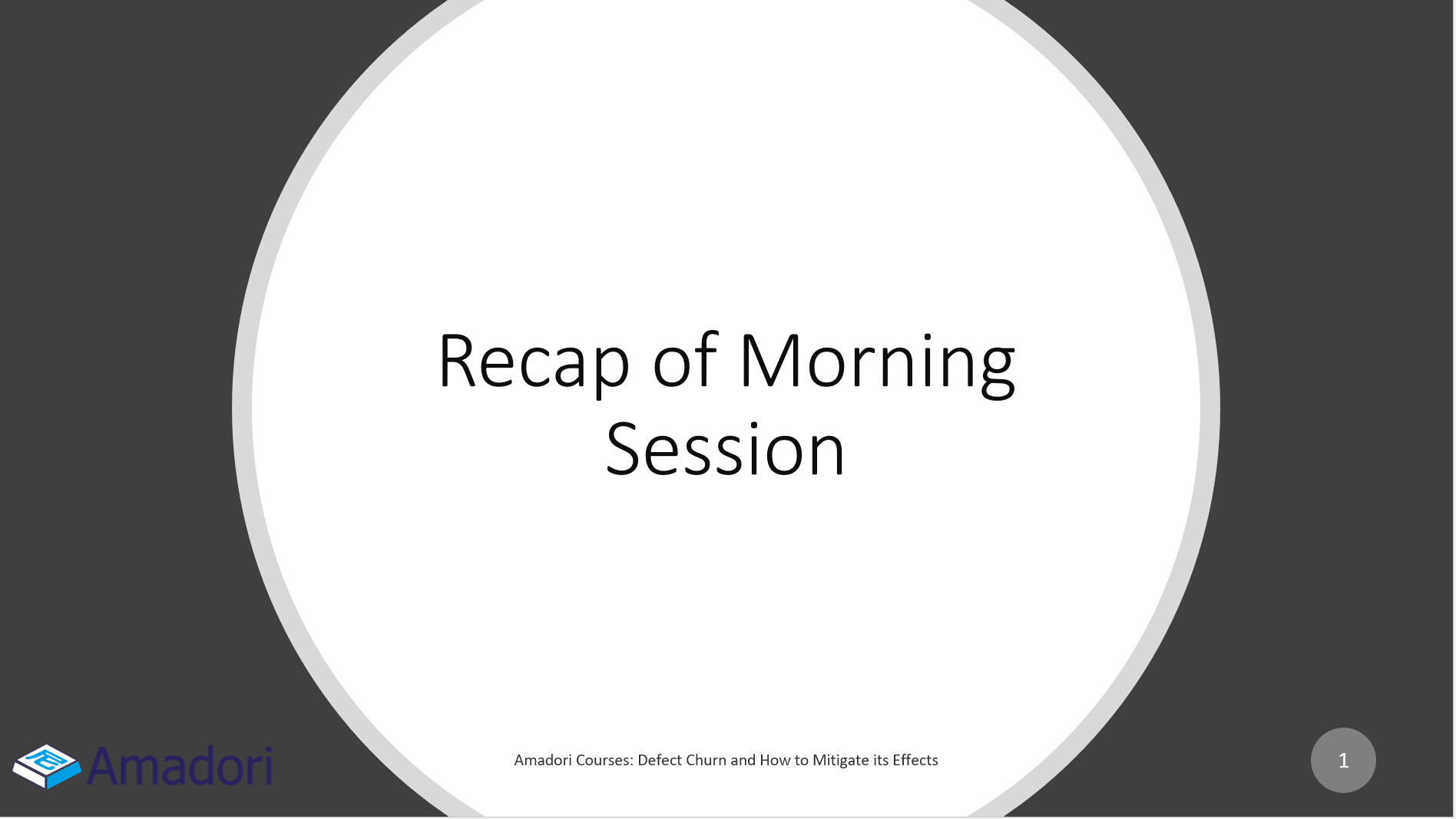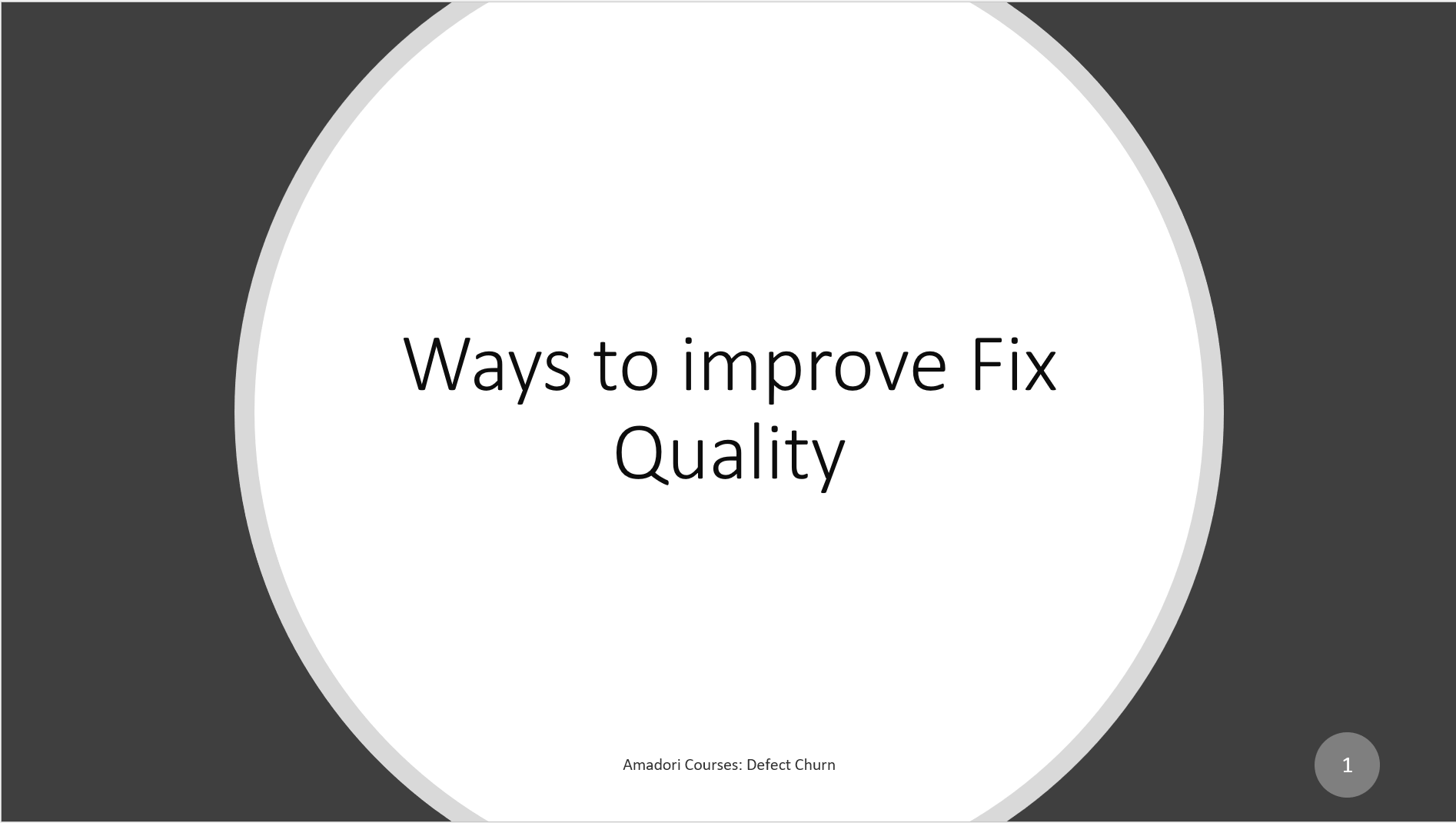Getting to the Root of Software Delivery Issues

Overall Course Summary
Defect Churn is one of the main reasons why Software Projects miss deadlines and suffer budget overrun and yet many people involved in these projects do not know what Defect Churn is and have even less idea about the best way to mitigate its impact
So this is a 1 day course which will benefit anyone who has the desire to see Quality Software delivered on time and within budget.
The Course will aim to meet the following goals
- Provide a definition of Defect Churn and list its possible impacts
- Provide examples of how Defect Churn might present itself in your projects
- Suggest ways in which different types Defect Churn can be mitigated or avoided
- Provide you with a tool which allows you to model the impact that different solutions to Defect Churn will have on YOUR project
Day 1 - Morning What is Defect Churn and Why is it so damaging to the Software Delivery Projects?
Session
Description
Training Material
- Explains that although Defect Churn is a major cause of project overrun it is often something that projects do little or nothing to address.
- Expresses the hope that following this course your projects will be better placed both to recognise Defect Churn if it occurs and to do something about it when it does

Provides examples of Defect Churn and shows how the how the standard approach to project planning often makes it difficult to
- identify defect churn when it occurs
- accurately measure its true impact when it does
- easily identify its root cause
A revised project planning template is demonstrated and the session includes an exercise where participants will build their own plan using this template

Rattle Testing is a simple technique which can significantly improve the Quality of release delivered for formal testing.
The session provides guidance on what to include in a arttle tst and hints as to how best integrate Rattle testing into your overall test strategy
This session is optional however and if attendees are agreed they already know all about rattle testing it may make sense to omit this session entirely and move straight to session 3.

Describes the 3 main types of Defect Churn and highlights how different types of churn require very different solutions
Includes an exercise to confirm that attendees can spot what type of churn is causing a specific problem
Day 1 - Afternoon - Mitigating the Impact of Defect Churn
Session
Description
Training Material

Reminds attendees that the morning was spent learning how to
- Identify different types of defect churn
- Allow for them in our project planning
- Produce useful measures of their impact
- Understand the root causes of every instance of defect churn

Reviews various methods of addressing code-based defect churn
Suggests that improving the quality of individual fixes is usually the best approach

Reviews different methods of improving fix quality and provides a tool to measure the relative effectiveness of the various solutions you may consider adopting to fix a specific instance of code-based churn.

A short session describing how improvements to the build and release management process can BOTH
- Significantly improve the quality of releases
- Reduce the time it takes to install a release and make it ready for testing

A certain degree of change in requirements is to be expected in any project but this session will look at ways in which this change can be managed and the impact of planned testing reduced

This session contains and exercise which allow participants to apply what they have learnt throughout the day to a real life project situation
It also offers to chance to ask any questions relating to defect churn arising out of any of the earlier sessions

